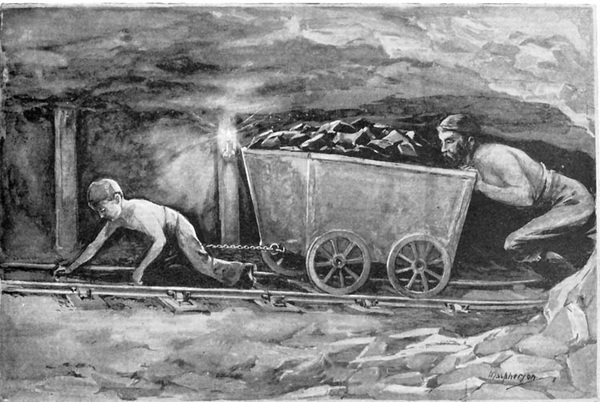Dublin Core
Title
Description
The depth, the dark, and the dangers inherent in coal mining created a uniquely hazardous work environment for miners in Utah at the turn of the twentieth century.
Imagine for a moment that you’re walking the mountain trails of Carbon County in the late nineteenth century. You come upon a geologist from the Utah Fuel Company who tells you that he’s about to recommend to his employers that they invest hundreds of thousands of dollars in an industrial coal operation right over there, where a vein of exposed coal juts from the hill.
The next time you walk that trail, you see workers blasting and digging their way through the mountain, following the vein deeper into the earth. The workers, you realize, possess many skills. They know how to dynamite their way through hard rock, cutting their way down in vertical “shafts,” angled “slopes,” and horizontal “drifts.” They also know how to brace these zig-zagging tunnels and to lay railroad track in order to haul ore back to the surface.
Once the infrastructure is built, the miners venture daily down into the mines to follow the coal seams deeper into the dark. To see, they carry candles and hang oil-wick lamps from their canvas hats. The hats help keep smoke and soot from their eyes, but the open flames risk igniting the methane gas that is common underground. Working in pairs, they swing their picks against the coalface, drill holes and pack them with gunpowder, and retreat to a safe distance to set off the explosives. Each new blast risks the mine collapsing, while toxic fumes and deadly gases make it difficult to breathe.
The early twentieth century was the deadliest time for miners in the history of the United States. Indeed, on May 1, 1900, an explosion at the Winter Quarters Mine in Scofield ignited the air and poisoned 200 men who died still clutching their tools. It was the worst US mine disaster to date. Soon after, Carbon County miners went on strike for safer working conditions. They won some concessions. But in the end, they still risked life and limb every day – and faced the lifelong specter of fatal lung disease – to extract the fuel that fired industry throughout the nation.
Creator
Source
Image: From James Dunn “From Coal Mine Upwards”, W. Green London, 1910. Mining is dangerous, grueling work and depended on the labor of men and children. There were few protections afforded to these workers and their families. Found at Bit Tooth Energy.
______________
See Kent Allen Powell, The Next Time We Strike: Labor in Utah's Coal Fields, 1900-1933, Logan: Utah State University Press, 1985; Thomas G. Andrews, Killing for Coal: America's Deadliest Labor War, Cambridge: Harvard University Press, 2008; “Mining Lights and Hats,” Smithsonian Museum of American History, accessed http://americanhistory.si.edu/collections/object-groups/mining-lights-and-hats; Yvette D. Ison, “The Scofield Mine Disaster in 1900 was Utah’s Worst,” History to Go, January 1995, accessed http://historytogo.utah.gov/utah_chapters/mining_and_railroads/thescofieldminedisasterin1900wasutahsworst.html

